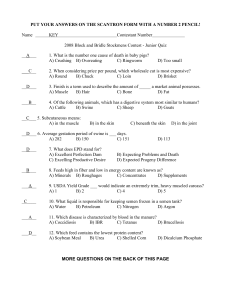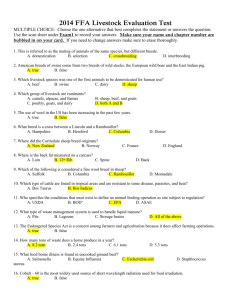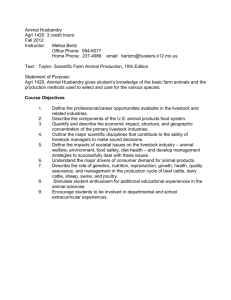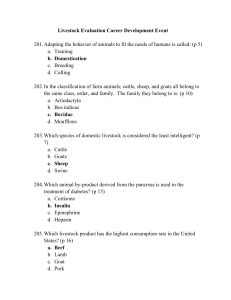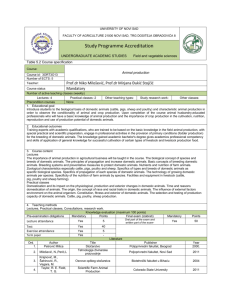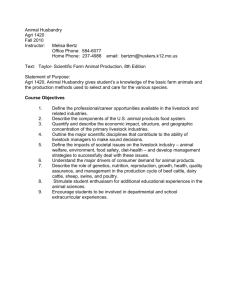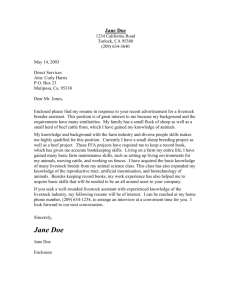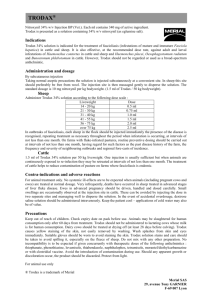livestock - The RH7 History Group
advertisement
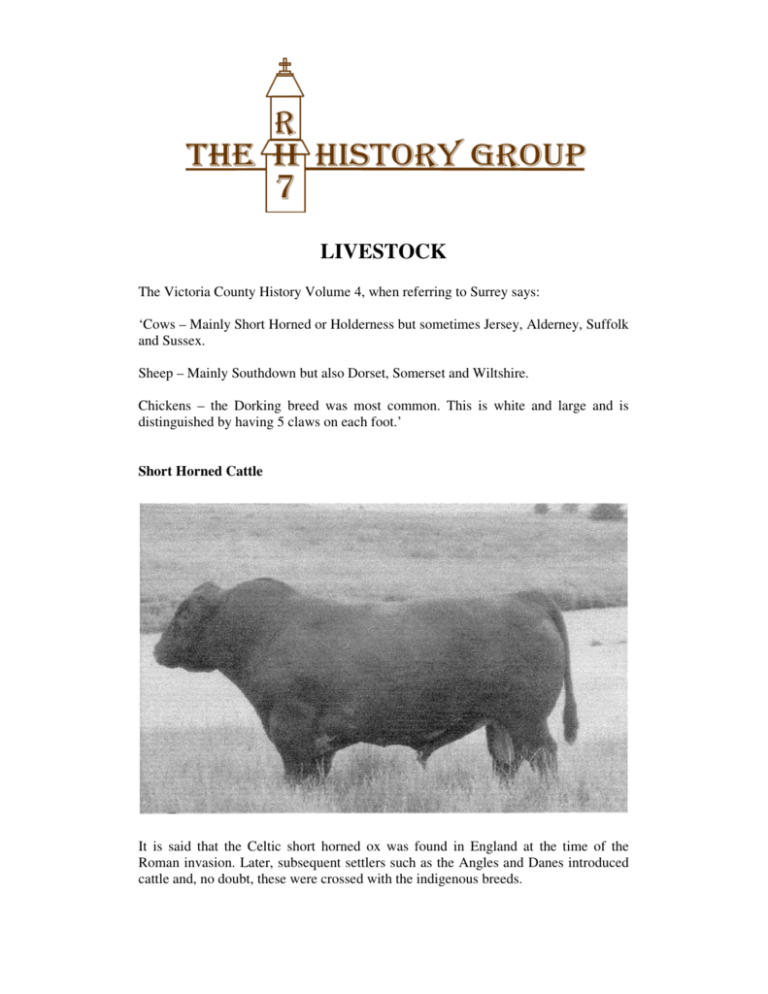
LIVESTOCK The Victoria County History Volume 4, when referring to Surrey says: ‘Cows – Mainly Short Horned or Holderness but sometimes Jersey, Alderney, Suffolk and Sussex. Sheep – Mainly Southdown but also Dorset, Somerset and Wiltshire. Chickens – the Dorking breed was most common. This is white and large and is distinguished by having 5 claws on each foot.’ Short Horned Cattle It is said that the Celtic short horned ox was found in England at the time of the Roman invasion. Later, subsequent settlers such as the Angles and Danes introduced cattle and, no doubt, these were crossed with the indigenous breeds. LIVESTOCK The alternative names for this breed of cattle show that it was in the North East of England that they originated. Holderness is a region on the Yorkshire coast north of the Humber estuary. Teeswater refers to the valley of the river Tees. As early as 1580 superior short horned cattle existed on large estates in Yorkshire. These cattle were of various colours including white, white patched, light dun, yellowish red, deep red and red and white patched. The cows have been described as ‘large milkers’ and the bullocks as ‘attaining a great weight of carcass and extraordinary production of tallow’. Southdown Sheep The Southdown sheep is an ancient breed which, as its name implies, originated on the chalk downs in Sussex particularly around Lewes. As early as 1341 there were estimated to be 110,000 sheep in Sussex and in the 19th century John Ellman of Glynde began a radical improvement of the breed by selective crossing. This produced a larger animal. ‘Close folding’ was also used. The soils of the chalk downs tend to be thin but, by confining the sheep at night, they manured and trod their dung into the soil enabling wheat to be grown successfully the following year. As well as large flocks of 1,000 animals on large estates, they were kept in smaller numbers by yeoman farmers producing good quality meat and wool. Southdown sheep have been exported worldwide but their greatest impact has probably been in New Zealand where it was the sire used in the production of ‘Canterbury Lamb’. 2 LIVESTOCK Dorking Chickens © Barry Koffler - www.feathersite.com Whilst the ‘Dorking’ is said to be the chicken that the Romans found when they invaded Britain, it is more likely that it was the post invasion settlers who introduced it from Italy. Columella, writing in AD 47 says ‘the breeding hens be of robust body, square framed and broad breasted, large-headed with small erect bright red comb’. This description fits the Dorking chicken with the five toes he specified being an essential characteristic. Late 17th century writers refer to ‘a white rose-combed fowl’ although, by the 18th century, the silver grey and dark, single combed varieties had been perfected. Dorkings are good layers and are one of the few instances where a bird with red earlobes lays white shelled eggs. Their large frame makes them ideal for crossing with other faster growing breeds for the table. © Michael Chappell May 2006 Sources: Victoria County History Cattle Breeds- Ok State Southdown Sheep Society Old Poultry Breeds by Fred Hams 3
